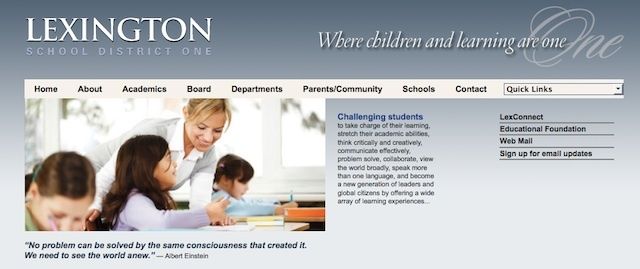Many school districts around the country are embarking on new territory this back to school season – deploying hundreds or thousands of iPads to students. Most of the deployments will be one-to-one initiatives where every student receives a school-owned iPad to use for this school year or their entire scholastic career. Planning such a roll out isn’t easy, but schools and districts making the shift this year have the advantage of looking what worked and didn’t work from counterparts that pioneered the iPad in the classroom last year.
One school district, Lexington County School District One of South Carolina, has served as a model for many other schools around the country. The district offers a lot of insight into the technical requirements, education policy issues, and roll out processes in such a colossal undertaking.
Following passage of a school bond issue in 2008, Lexington County School District One went forward exploring a one-to-one laptop initiative and later opting for iPads instead. The district took a methodical approach to planning its iPad deployment that included evaluating and implementing needed network capacity, content filtering, and device management solutions.
The massive roll out took place across the district’s four high schools last fall over a two-week period. The first roll out focused on hitting an entire high school serving about 3,100 students at one time – a move that temporarily overwhelmed the district’s mobile management system. Smaller roll outs occurred afterward and the district’s high school students – all 6,500 of them – had their iPads within a very short span of time.
What did that roll out look like from a technology perspective?
- 1,200 Cisco Wi-Fi access points that can be centrally managed
- Device configuration and management using MobileIron
- Assigning a technician to each school to deal with just iPad-related issues as they come up
- VPN support for all iPads to comply with filtering regulations and policies such that iPads connected to off campus networks route all Internet traffic through the school’s network and filtering system
The district is implementing a similar roll out this year for its seven middle schools that will also follow a one to one deployment approach and gives 5,300 students an iPad. Consent from parents is required for students under 13 to sign up for an Apple ID/iTunes account.
Lexington One is also rolling out iPads to its elementary schools but not in a one-to-one model. Instead iPads will be shared among students with schools getting one iPad for two and a half children. Each school will decide how to distribute or share access to the iPads on its own.
Lexington has been a model for school administrators and IT professionals and many have visited to learn how to build a similar program. The school also participated in an incredibly insightful webinar with MobileIron earlier this year. A recording of that presentation is available (free registration required) and it is an excellent resource for educators, school administrators, and anyone curious about what goes into such a massive undertaking in a school. Additional information about Lexington’s experience as well as that of a neighboring district is also available from Scholastic.
Source: Scholastic
Image: Lexington School District One


